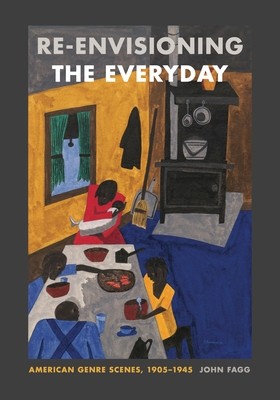
- We will send in 10–14 business days.
- Author: John Fagg
- Publisher: Penn State University Press
- ISBN-10: 0271093994
- ISBN-13: 9780271093994
- Format: 18.6 x 25.9 x 1.5 cm, kieti viršeliai
- Language: English
- SAVE -10% with code: EXTRA
Reviews
Description
Often seen as backward-looking and convention-bound, genre painting representing scenes of everyday life was central to the work of twentieth-century artists such as John Sloan, Norman Rockwell, Jacob Lawrence, and others, who adapted such subjects to an era of rapid urbanization, mass media, and modernist art. Re-envisioning the Everyday asks what their works do to the tradition of genre painting and whether it remains a meaningful category through which to understand them.
Working with and against the established narrative of American genre painting's late-nineteenth-century decline into obsolescence, John Fagg explores how artists and illustrators used elements of the tradition to picture everyday life in a rapidly changing society, whether by appealing to its nostalgic and historical connotations or by updating it to address new formal and thematic concerns. Fagg argues that genre painting enabled twentieth-century artists to look slowly and carefully at scenes of everyday life and, on some occasions, to understand those scenes as sites of political oppression and resistance. But it also limited them to tradition-bound, anachronistic ways of seeing and tied them to a freighted history of stereotyping and condescension.
By surveying genre painting when its status and relevance were uncertain and by looking at works that stretch and complicate its boundaries, this book considers what the form is and probes the wider practice of generic categorization. It will appeal to students and scholars of American art history, criticism, and cultural studies.
EXTRA 10 % discount with code: EXTRA
The promotion ends in 23d.13:01:50
The discount code is valid when purchasing from 10 €. Discounts do not stack.
- Author: John Fagg
- Publisher: Penn State University Press
- ISBN-10: 0271093994
- ISBN-13: 9780271093994
- Format: 18.6 x 25.9 x 1.5 cm, kieti viršeliai
- Language: English English
Often seen as backward-looking and convention-bound, genre painting representing scenes of everyday life was central to the work of twentieth-century artists such as John Sloan, Norman Rockwell, Jacob Lawrence, and others, who adapted such subjects to an era of rapid urbanization, mass media, and modernist art. Re-envisioning the Everyday asks what their works do to the tradition of genre painting and whether it remains a meaningful category through which to understand them.
Working with and against the established narrative of American genre painting's late-nineteenth-century decline into obsolescence, John Fagg explores how artists and illustrators used elements of the tradition to picture everyday life in a rapidly changing society, whether by appealing to its nostalgic and historical connotations or by updating it to address new formal and thematic concerns. Fagg argues that genre painting enabled twentieth-century artists to look slowly and carefully at scenes of everyday life and, on some occasions, to understand those scenes as sites of political oppression and resistance. But it also limited them to tradition-bound, anachronistic ways of seeing and tied them to a freighted history of stereotyping and condescension.
By surveying genre painting when its status and relevance were uncertain and by looking at works that stretch and complicate its boundaries, this book considers what the form is and probes the wider practice of generic categorization. It will appeal to students and scholars of American art history, criticism, and cultural studies.


Reviews